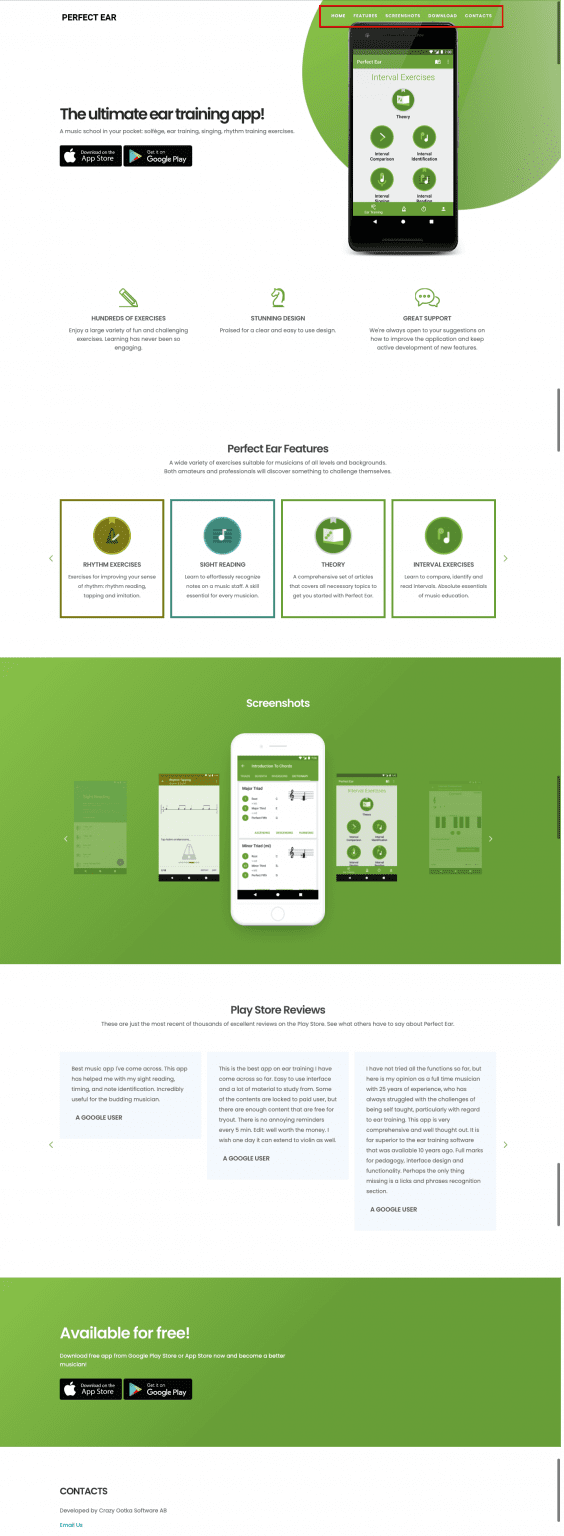

Ear trainer app news mods#
It's important that we get such posts taken down ASAP, so in addition to reporting, please message the mods if you see someone breaking Rule #3.Ĥ. Please ask your IRL teacher/tutor for homework help instead. Our subscribers generally dislike this kind of behavior. It is against the Academic Honesty Policy of most schools and courses. No homework help on specific assignments. However, comments that productively guide OP to their own answer or offer substantive critique are encouraged.ģ.

Avoid "do your own research" responses, such as bluntly telling OP to Google the answer or to figure it out for themselves. Dismissive or blatantly unhelpful top-level comments will be removed. Any critiques should be focused on ideas, never on individual users.Ģ. Disagreements and discussion are great, but hostility, insults, and so on aren't. Complete Ear Trainer was designed with strong pedagogical concepts in mind, and users cannot progress to the next level of interval training, chord identification, scales, etc., until they have truly mastered the present level concepts.Please use the "report" button for posts violating the rules!ġ. However, don’t let the video game aspect diminish its professionalism and effective lessons. The Complete Ear Trainer app considers itself to be “the ultimate ear training app for musicians.” Younger students and competitive gamers will appreciate that it feels more like a video game than other straightforward apps, including an “arcade mode” where you can play ear training games and exercises in an arcade-like virtual setting. There’s never a better time than the present, and with SoundGym you can “start training!” ASAP. SoundGym tackles ear training like a workout, and considers the app to be “The gym for your ears,” where musicians can get audio ear training online, improve core listening skills like frequency detection or compression, and start sounding like a pro. We love the name of this app because when you’re a beginner, it can feel like you’ve gone to a SoundGym as your eyes, brain, and ears try to grapple with all they are taking in to make sense of the notes you are playing.

The creators say they were tired of the systematic way that music theory was taught and so they created music theory lessons that were made for “real humans.”
Ear trainer app news how to#
Solfej contains 10 different ear training modules designed to help students recognize intervals by sight and sound, learn how to play polyrhythms, and to bring a fresh approach to learning music theory. Thus, it makes perfect sense that one of the best ear training apps out there is called Solfej. Have you encountered the musical term “solfeggio” in your beginning studies? As the song, “Do Re Mi” from The Sound of Music so exuberantly communicates, solfeggio provides a syllable for each note in the 8-note scale, making it simple for musicians to identify roots, intervals and chords as they see them written on a piece of sheet music (or hear them and transcribe them). If you make this part of your regular practice routine, you’ll be transcribing melodies, scales, chords, intervals, chord progressions and rhythms as you hear them, essential for developing composition skills. There are more than 2500 separate exercises.
Ear trainer app news Pc#
The Ear Master program is also available for both Mac and PC users, and it has a little bit of everything: You’ll know “you’ve arrived” when you use the “Absolute Pitch Trainer” and can accurately name the notes by ear! All work to help your ear “hear” the relationships between notes and intervals, which are essential components of both sight-reading as well as playing in tune. The app has exercises available in three different categories: theory, ear training, and rhythm. While you can get it for free, the premium version costs less than $5 and is well worth the small investment. It is available from both The App Store and GooglePlay, and has ample positive reviews. Like many of the ear training apps out there, Perfect Ear also offers other music theory-related benefits. These apps mean you can work on ear training exercises as a part of your home practice, while riding the bus to school, or anywhere your daily routine may find you. If you haven’t already, we recommend visiting our recent post, 5 Tips for Training Your Musical Ear. Then, it’s time to explore some of the best ear training apps for violinists and other string musicians. Without frets to anchor precise pitch, it is up to the brain-ear connection to ensure violinists play the exact right note. Training the ear is as essential as training the fingers and wrists when learning to play the violin or other fretless instruments, like the viola, cello, and bass.


 0 kommentar(er)
0 kommentar(er)
